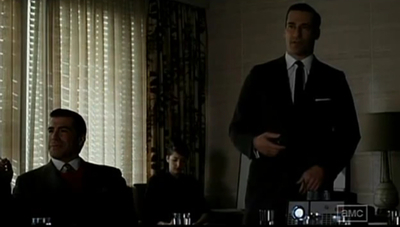Don Draper, from the season 1 finale of Mad Men (YouTube, skip if you plan to watch the whole series):
This device isn't a spaceship; it's a time machine. It goes backwards, forwards. It takes us to a place where we ache to go again. It's not called the wheel; it's called the carousel. It lets us travel the way a child travels — around and around, and back home again, to a place where we know we were loved.
When I first saw this a couple years ago I thought of Steve Jobs, the master pitchman in our industry. The delivery is different, more personal here, but it was stunning as part of the full episode. Who doesn’t want to build products that resonate so well, that go from nice utilities or productivity apps to something our customers fall in love with?
First you build a product that changes things, that is truly useful. Something ambitious. Then find a way to sell it that connects, and underscore why it matters.
I don’t really know how to do this yet. But I do know that part of it is telling stories. Why did I create Tweet Library? To tell stories, to remember events that matter before they’re lost in the fleeting stream of old tweets. It’s the kind of nostalgia at the heart of the Mad Men clip.
I like this post from Kyle Neath of GitHub, that it’s about ideas, not products (via Duncan Davidson):
People want to be part of ideas. Being part of a company who builds a successful product is cool... but being part of an idea is a lot more attractive. If you can build a business where both your employees and your customers think they're part of an idea, you've created something special.
If you can extract the core idea from a great product, everything that comes next can be matched to the idea, so the product has a clear path for new features. Building a story around it — something that sticks, and having the resources to tell that story properly — takes a lot of work. I’m inspired when I see others do it well, and it’s an art I hope to make time for.
